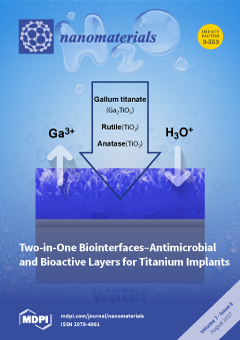The photocatalytic degradation of the model pollutant carbamazepine (CBZ) was investigated under simulated solar irradiation with an N-doped TiO
2-coated Al
2O
3 photocatalytic membrane, using different water types. The photocatalytic membrane combines photocatalysis and membrane filtration in a single step.
[...] Read more.
The photocatalytic degradation of the model pollutant carbamazepine (CBZ) was investigated under simulated solar irradiation with an N-doped TiO
2-coated Al
2O
3 photocatalytic membrane, using different water types. The photocatalytic membrane combines photocatalysis and membrane filtration in a single step. The impact of each individual constituent such as acidity, alkalinity, dissolved organic matter (DOM), divalent cations (Mg
2+ and Ca
2+), and Cl
− on the degradation of CBZ was examined. CBZ in water was efficiently degraded by an N-doped TiO
2-coated Al
2O
3 membrane. However, elements added to the water, which simulate the constituents of natural water, had an impact on the CBZ degradation. Water alkalinity inhibited CBZ degradation mostly due to increase in pH while radical scavenging by carbonate was more dominant at higher values (>200 mg/L as CaCO
3). A negative effect of Ca
2+ addition on photocatalytic degradation was found only in combination with phosphate buffer, probably caused by deposition of CaHPO
4 or CaHPO
4·2H
2O on the catalyst surface. The presence of Cl
− and Mg
2+ ions had no effect on CBZ degradation. DOM significantly inhibited CBZ degradation for all tested background organic compounds. The photocatalytic activity of N-doped TiO
2-coated Al
2O
3 membranes gradually decreased after continuous use; however, it was successfully regenerated by 0.1% HCl chemical cleaning. Nevertheless, dissolution of metals like Al and Ti should be monitored following acid cleaning.
Full article






